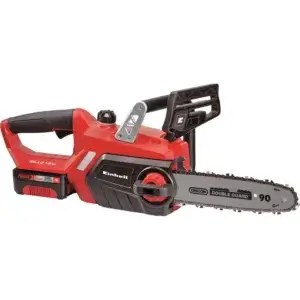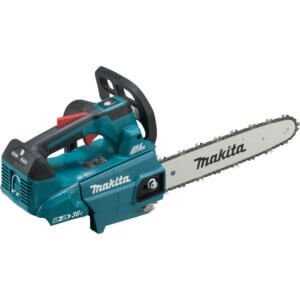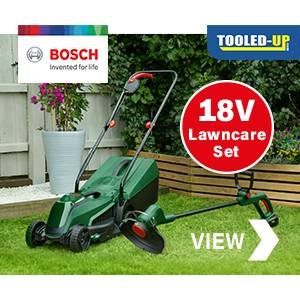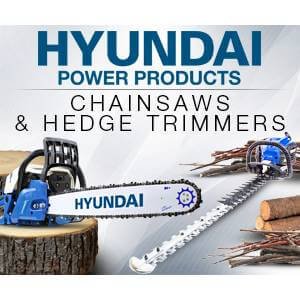Are you struggling to start your chainsaw? Many users face this challenge due to issues with the internal combustion engine, the fuel line, or a faulty wire. This article will provide a step-by-step troubleshooting guide to help you identify and resolve common starting problems, as well as preventative maintenance tips to ensure reliable operation. By addressing these key issues, readers will learn effective solutions that not only save time but also enhance the performance of their chainsaw. Let’s get started on getting your tool back to work efficiently.
Key Takeaways
- Regular maintenance of the spark plug ensures reliable starting and improved chainsaw performance
- Cleaning or replacing the air filter enhances airflow and prevents starting difficulties
- Using fresh fuel is essential to avoid stale fuel issues that hinder ignition
- Assessing the carburettor and fuel system can resolve many starting problems
- Recognising signs of major mechanical issues can prevent costly repairs and enhance chainsaw longevity
Common Causes of Chainsaw Starting Problems
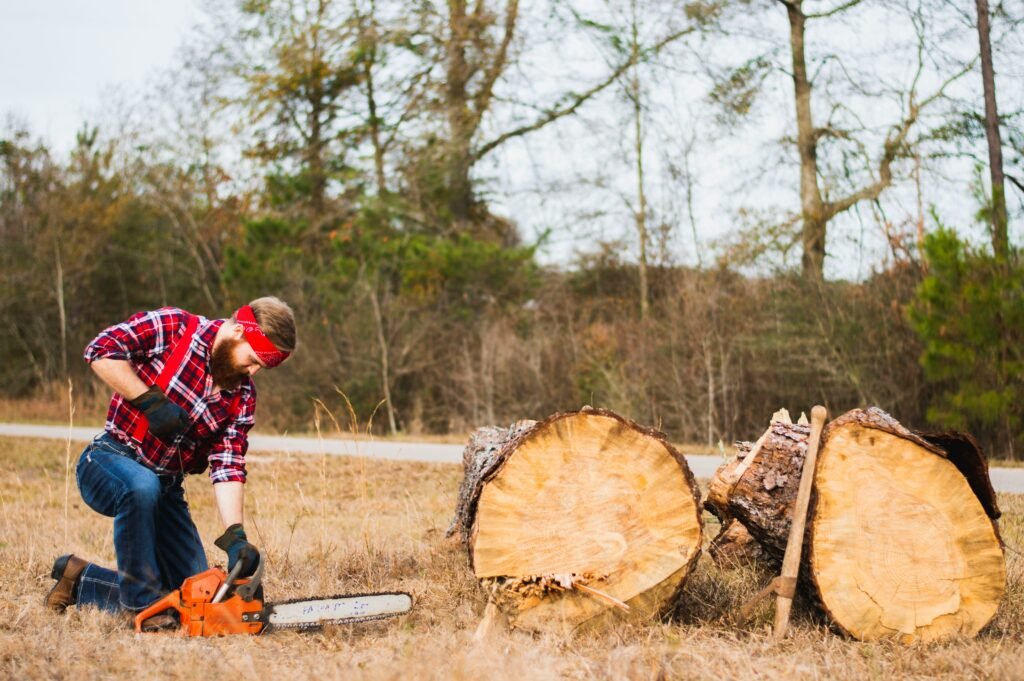
Chainsaw starting problems can stem from several common issues. Firstly, inspecting the fuel supply in the fuel tank ensures that the mixture is correct and not stale. Next, checking the spark plug for damage is crucial as it affects ignition. Additionally, examining the air filter for blockages can prevent adequate airflow for combustion. Assessing carburettor functionality is important to avoid flooding issues, and evaluating the ignition system ensures that power is reaching the engine. Each of these areas will be explored to provide effective solutions for getting a chainsaw running smoothly.
Inspecting the Fuel Supply
Inspecting the fuel supply is the first step in troubleshooting starting problems with a chainsaw. It is essential to check that the fuel tank contains the correct fuel mixture, which typically involves a combination of petrol and two-stroke oil. Additionally, using fuel that contains no more than 10% ethanol is recommended, as higher levels can lead to issues with the chainsaw’s engine. Stale fuel can also cause starting difficulties, so ensuring that the fuel is fresh is critical.
The fuel system should be inspected thoroughly, including the fuel lines and filter. Blockages in the fuel line can prevent the necessary flow of fuel, making it impossible for the chainsaw to start. If sawdust or debris gets into the fuel filter, this can disrupt the supply and affect the function of the carburettor, leading to poor combustion and performance. Ensuring the air filter is clean will also aid in allowing proper airflow for combustion.
Finally, the condition of the spark plug must be taken into account. The spark plug’s electrode should be clean and show no signs of wear or damage. A faulty spark plug can prevent ignition, which is crucial for the chainsaw to start properly. Regular maintenance that includes changing the spark plug and inspecting the fuel system will enhance the reliability of the chainsaw, reducing the chances of future starting problems.
Checking the Spark Plug for Damage
Checking the spark plug for damage is vital in resolving chainsaw starting issues. The spark plug ignites the petrol and oil mixture in the engine, making it crucial for proper ignition. A dirty or damaged spark plug cannot create a spark, which leads to starting problems that can frustrate users.
When examining the spark plug, it is essential to look for signs of wear such as corrosion or a cracked insulator. Additionally, the spark plug electrode should be free of carbon buildup that can interfere with its function. If the spark plug is faulty, replacing it will often lead to an immediate improvement in starting reliability, helping the chainsaw to start easily and operate efficiently.
In tandem with checking the spark plug, it is good practice to inspect related components like the fuel filter and carburettor. A clogged fuel filter can restrict fuel flow, challenging the engine performance. Ensuring all parts work together harmoniously not only helps in troubleshooting starting issues but also enhances the overall longevity of the chainsaw.
Examining the Air Filter for Blockages
Examining the air filter for blockages is a crucial step in troubleshooting chainsaw starting problems. The air filter plays a significant role in ensuring that the engine receives the proper airflow necessary for combustion. If the filter is clogged with debris or carbon build-up, it can restrict airflow, leading to insufficient oxygen reaching the cylinder, ultimately causing starting issues.
In practical terms, this means that if a chainsaw struggles to start despite a proper fuel tank mixture and a functional spark plug, the air filter should be among the first components to inspect. Cleaning or replacing a dirty air filter can often lead to immediate improvement in starting reliability. By ensuring the air filter is in good condition, users support their chainsaw’s overall efficiency and performance.
To maintain a well-functioning chainsaw, regular air filter inspections should be part of the routine care. When owners pull the rope and the machine fails to ignite, considering the air filter may save time and frustration. Thus, keeping this component clean ensures the engine gets the necessary air, leading to smoother operation and a longer lifespan for the equipment:
- Check the condition of the air filter regularly.
- Clean or replace the air filter if it’s clogged.
- Ensure proper airflow to the cylinder for optimal performance.
Assessing the Carburettor Functionality
Assessing the functionality of the carburettor is crucial when dealing with chainsaw starting issues. A clogged carburettor can significantly disrupt the flow of fuel to the engine, ultimately affecting ignition. It is essential to inspect the screws that secure the carburettor, as their condition can indicate whether the unit is properly adjusted or requires maintenance.
In some cases, wear and tear on the carburettor can lead to problems within the ignition system. If components are worn down, fuel delivery may be inconsistent, leading to starting difficulties. Regularly cleaning the carburettor can help prevent buildup that might impede performance, ensuring the chainsaw operates smoothly.
Furthermore, examining the ignition coil in conjunction with the carburettor can provide insights into the starting problem. If the ignition coil does not send the proper spark to the engine, even a well-functioning carburettor may not resolve starting issues. Therefore, addressing both the carburettor and ignition system together can lead to more effective solutions for chainsaw starting problems:
| Component | Potential Issue | Solution |
|---|---|---|
| Carburettor | Clogged | Clean or replace it |
| Screws | Improper Adjustment | Tighten or adjust as necessary |
| Ignition System | Faulty | Check ignition coil for wear |
Evaluating the Ignition System
Evaluating the ignition system is essential for diagnosing chainsaw starting problems. The ignition system comprises critical components like the spark plug, which ignites the fuel mixture. A worn or fouled spark plug can prevent the chainsaw from starting, so inspecting it for signs of wear, such as carbon deposits, can yield valuable insights. Users who regularly check the spark plug are more likely to maintain reliable starting capabilities.
Another vital element to examine is the spark arrestor located within the muffler. This component helps to prevent sparks from escaping, ensuring safe operation. If the spark arrestor becomes clogged with debris, it can restrict exhaust flow and affect overall engine performance. By cleaning or replacing a blocked spark arrestor, users can improve the efficiency of their ignition system and thereby facilitate smoother starts.
Additionally, assessing the throttle and fuel pump is crucial for a properly functioning ignition system. The throttle controls the air-fuel mixture entering the engine, while the fuel pump ensures the right amount of fuel reaches it. Any blockage or malfunction in these areas can hinder ignition and lead to frustrating starting troubles. Regular maintenance of the ignition system, including these components, will enhance chainsaw performance and reliability for users
Step-by-Step Chainsaw Troubleshooting Guide
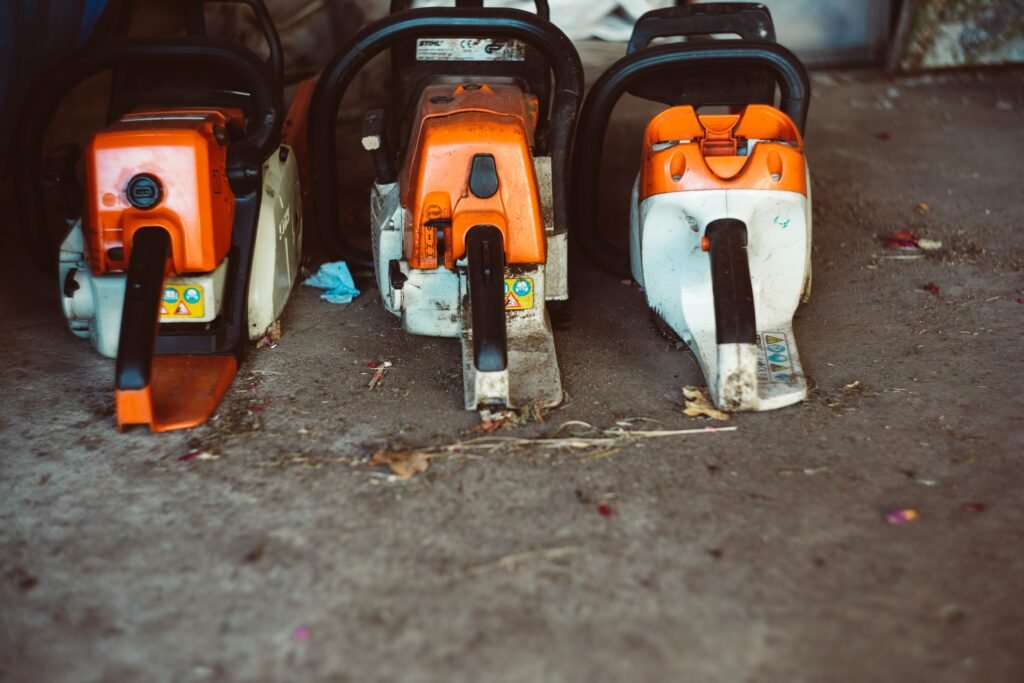
To effectively address chainsaw starting issues, users should first verify the on/off switch position, ensuring the power tool is ready for operation. Next, it is essential to confirm that the chain brake is disengaged. Testing compression levels will follow, as inadequate compression can hinder ignition. Identifying engine flooding symptoms and using starter fluid appropriately will conclude this troubleshooting guide, offering practical solutions for maintaining efficient wood cutting and firewood preparation.
Verifying the on/Off Switch Position
Verifying the on/off switch position is a simple yet often overlooked step in resolving chainsaw starting issues. Many users may unintentionally leave the switch in the ‘off’ position, believing they have prepared the machine for use. Confirming that the switch is indeed in the ‘on’ position is essential for ensuring that power flows to the ignition system, allowing the chainsaw to start effectively.
In addition to checking the switch, it is crucial to examine for any signs of wear or damage, such as frayed wiring or a malfunctioning switch mechanism. If the switch is faulty, it could prevent the chainsaw from starting regardless of other working components. Regular inspection of this area can help mitigate frustration during operation, ensuring that the tool is ready for use when needed.
This preliminary step could save valuable time and effort in troubleshooting starting problems. Users should start their chainsaw preparation routine by making it a habit to always check the on/off switch position first. By addressing this fundamental aspect, they can avoid unnecessary complications and enhance their chainsaw’s operational efficiency:
| Action | Importance | Outcome |
|---|---|---|
| Check on/off switch | Ensures power supply | Chainsaw starts smoothly |
| Inspect switch for damage | Avoids starting issues | Improved reliability |
| Make it a routine | Streamlines preparation | Efficiency in usage |
Ensuring the Chain Brake Is Disengaged
Ensuring the chain brake is disengaged is a fundamental step in diagnosing chainsaw starting issues. Many users may overlook this simple yet critical action, leading to unnecessary frustration. If the chain brake is engaged, it prevents the chainsaw from starting as the safety mechanism is designed to stop the chain from moving while the tool is not in use.
To check the chain brake, users should visually inspect the brake lever or handle and ensure it is in the ‘run’ position. A clear indication that the chain brake is disengaged is when the lever can be moved freely. If assistance is needed, consulting the chainsaw’s manual can provide specific instructions for the model being used.
Regular maintenance of the chain brake mechanism can prevent complications during operation. Users should periodically test the chain brake to ensure it functions correctly, as any malfunction can hinder performance and poses safety risks. By incorporating this check into routine maintenance, users support the overall reliability of their chainsaw and enhance its usability:
- Always check the chain brake before starting.
- Ensure the brake lever is in the ‘run’ position.
- Consult the user manual for specific instructions.
Testing Compression Levels
Testing compression levels is a fundamental step in diagnosing chainsaw starting issues. A chainsaw requires adequate compression to ignite the fuel mixture effectively. If a chainsaw struggles to start, it may indicate low compression, which can stem from worn piston rings, damaged gaskets, or cylinder issues.
To test the compression levels, users should employ a compression gauge. This tool is inserted into the spark plug hole, allowing for an accurate reading when the engine is pulled. A reading significantly below the manufacturer’s specifications is a clear sign that the engine requires attention, potentially pointing towards repairs or part replacements.
Regularly assessing compression levels can prevent frustration during use. Maintaining proper compression ensures that the chainsaw operates efficiently and reliably. Incorporating this test into routine maintenance can help users identify issues early, saving time and improving the overall performance of the chainsaw:
- Use a compression gauge for accurate readings.
- Compare results with manufacturer specifications.
- Address low compression with necessary repairs or replacements.
Identifying Engine Flooding Symptoms
Identifying engine flooding symptoms is crucial for resolving chainsaw starting issues. Flooding occurs when excess fuel enters the engine, preventing ignition. Common indicators include difficulty in starting the chainsaw, a strong smell of fuel, and the presence of fuel leaking from the spark plug or exhaust. Recognising these signs promptly can help users take the necessary steps to rectify the problem.
When a chainsaw is flooded, it often fails to start even after multiple attempts. Users may notice that the engine turns over but does not ignite, leading to frustration. Addressing the issue may involve allowing the engine to sit for a period to evaporate excess fuel and then attempting to start it again. This approach can often resolve flooding problems without needing complex repairs.
If the chainsaw continues to present signs of flooding, users should consider adjusting the carburettor settings for the desired fuel-air mixture. This adjustment can help prevent future occurrences and ensure smoother operation. Additionally, maintaining proper fuel levels and using the right fuel mixture contributes significantly to preventing flooding, enhancing overall chainsaw performance.
Using Starter Fluid Appropriately
Using starter fluid can be a beneficial approach when diagnosing chainsaw starting issues, especially if it is suspected that the engine is not receiving enough fuel. Starter fluid is designed to create an easy ignition for engines that may struggle to start due to fuel problems. However, users should apply it sparingly, as excessive use can lead to potential damage to the engine or its components.
When employing starter fluid, it is essential to follow the manufacturer’s instructions carefully. The fluid should be sprayed directly into the air intake or the carburettor while the chainsaw is being started. This method provides a quick way to assess if the issue lies within the fuel supply, as a successful start suggests that fuel delivery may be the problem rather than other mechanical issues.
It is important to note that while starter fluid can offer a temporary solution, it is not a substitute for resolving underlying issues within the chainsaw’s fuel system. After successfully starting the chainsaw, users are encouraged to investigate any potential blockages or faults in the fuel lines, carburettor, and fuel mixture. This comprehensive approach ensures reliable operation of the chainsaw, preventing future starting difficulties and enhancing overall performance.
Quick Fixes to Get Your Chainsaw Running
Replacing a faulty spark plug, cleaning or replacing the air filter, draining and replacing old fuel, adjusting carburettor settings, and clearing a clogged fuel filter are effective quick fixes for chainsaw starting issues. These methods can significantly improve the chainsaw’s performance and reliability, ensuring it operates smoothly. The following sections will provide practical insights on each of these solutions.
Replacing a Faulty Spark Plug
Replacing a faulty spark plug is one of the most effective solutions for chainsaw starting issues. A spark plug that shows signs of wear, such as corrosion or carbon buildup, can hinder ignition. Regularly monitoring the condition of the spark plug and replacing it when necessary can lead to improved starting reliability and overall chainsaw performance.
The replacement process is straightforward and can be done with minimal tools. Users should first remove the spark plug using a spark plug socket wrench, ensuring the engine is cool to avoid burns. After examining the old spark plug, installing a new one that meets the manufacturer’s specifications will ensure proper engine function.
By prioritising this simple fix, chainsaw users can save time and frustration. Addressing spark plug issues not only enhances starting but also contributes to the chainsaw’s longevity. Implementing regular maintenance, including spark plug inspections, will further reduce starting complications and support efficient wood cutting operations:
- Inspect the spark plug for wear and damage.
- Remove the old spark plug carefully.
- Install a compatible new spark plug.
- Regularly monitor spark plug condition for optimal performance.
Cleaning or Replacing the Air Filter
Cleaning or replacing the air filter is a critical step in restoring chainsaw performance. A clean air filter ensures that the engine receives the right amount of airflow needed for optimal combustion. When the air filter is clogged with dirt and debris, it can restrict airflow, making it difficult for the chainsaw to start and operate effectively.
Regular maintenance of the air filter can significantly enhance the reliability of a chainsaw. Users should check the filter frequently, especially after extended use or during heavy-duty tasks. Cleaning a dirty air filter can often be accomplished with mild soap and water, allowing the filter to dry completely before reinstalling it. If the filter shows signs of wear or damage, replacing it is the best option to avoid further starting issues.
To maximise chainsaw efficiency, proper attention to the air filter should be part of routine maintenance. By ensuring that the air filter is in good condition, users can prevent potential starting problems and improve the overall performance of their chainsaw. This simple yet effective maintenance task helps extend the life of the equipment and ensures that users can tackle their gardening or wood-cutting tasks without unnecessary delays:
| Action | Importance | Outcome |
|---|---|---|
| Clean air filter | Ensures proper airflow | Improved starting performance |
| Replace damaged filter | Maintains engine efficiency | Reliable operation |
| Regular inspections | Prevents future issues | Extended chainsaw lifespan |
Draining and Replacing Old Fuel
Draining and replacing old fuel is an essential step for resolving chainsaw starting issues. Stale fuel can create significant problems, as it tends to lose its combustibility over time, making it difficult for the engine to ignite effectively. Chainsaw owners should regularly assess the fuel in their machines, especially if the saw has not been used for an extended period, ensuring they use a fresh, suitable fuel mixture for optimal performance.
When draining old fuel, it is important for users to follow safety protocols, such as working in a well-ventilated area and using proper containers to capture the old fuel. Once emptied, refilling the chainsaw with fresh fuel, typically a mix of petrol and two-stroke oil, will enhance the engine’s starting reliability. This routine not only prevents engine wear, but it also promotes the longevity of the chainsaw.
Regularly changing the fuel can be a simple yet effective preventative measure. Users who pay attention to their fuel supply see improved starting success and overall performance in their chainsaws. By incorporating this practice into routine maintenance, chainsaw owners can minimise starting difficulties and ensure that their equipment is always ready for action when needed.
Adjusting Carburettor Settings
Adjusting the carburettor settings is an essential step for resolving chainsaw starting problems. The carburettor regulates the fuel-air mixture that enters the engine, and improper settings can lead to difficulty in starting. By ensuring the carburettor is finely tuned, users can significantly enhance the ignition efficiency of their chainsaw.
To make adjustments, users should refer to the chainsaw’s user manual for specific guidelines. Typically, the carburettor has a series of screws for tuning, which control the idle speed, low speed, and high-speed fuel flow. Making these fine adjustments can help optimise engine performance, leading to more reliable starts.
Regular testing after adjustments is crucial to ensure that the changes have the desired effect. If the chainsaw starts more easily and runs smoothly, the adjustments have likely been successful. Keeping a record of the settings used can also help in future maintenance efforts and contribute to the tool’s ongoing reliability:
| Setting | Adjustment Purpose | Expected Outcome |
|---|---|---|
| Idle Speed | Control low engine speed | Smoother running at low RPMs |
| Low Speed | Regulate fuel flow at low RPMs | Better performance during idling |
| High Speed | Control fuel delivery at high RPMs | Improved throttle response and acceleration |
Clearing a Clogged Fuel Filter
Clearing a clogged fuel filter is an essential maintenance step to address chainsaw starting issues. A clogged filter can prevent the necessary flow of fuel to the engine, leading to difficulty in starting or erratic performance. Identifying signs of a clogged fuel filter, such as sputtering or stalling during operation, prompts users to take immediate action to restore functionality.
To clear the fuel filter, users should first safely remove the fuel line from the chainsaw. Cleaning the filter using compressed air or suitable solvents helps remove any debris or buildup, allowing for better fuel flow. If the filter is too damaged or obstructed to clean effectively, replacing it with a new one is advisable to ensure reliable chainsaw operation.
Regular inspection and maintenance of the fuel filter play a crucial role in preventing starting problems. By incorporating this simple task into routine chainsaw care, users can enhance the performance and longevity of their equipment. Ensuring that the chainsaw has a clean and functional fuel filter not only aids in starting but also supports optimal fuel efficiency during use.
Preventative Maintenance for Reliable Starting
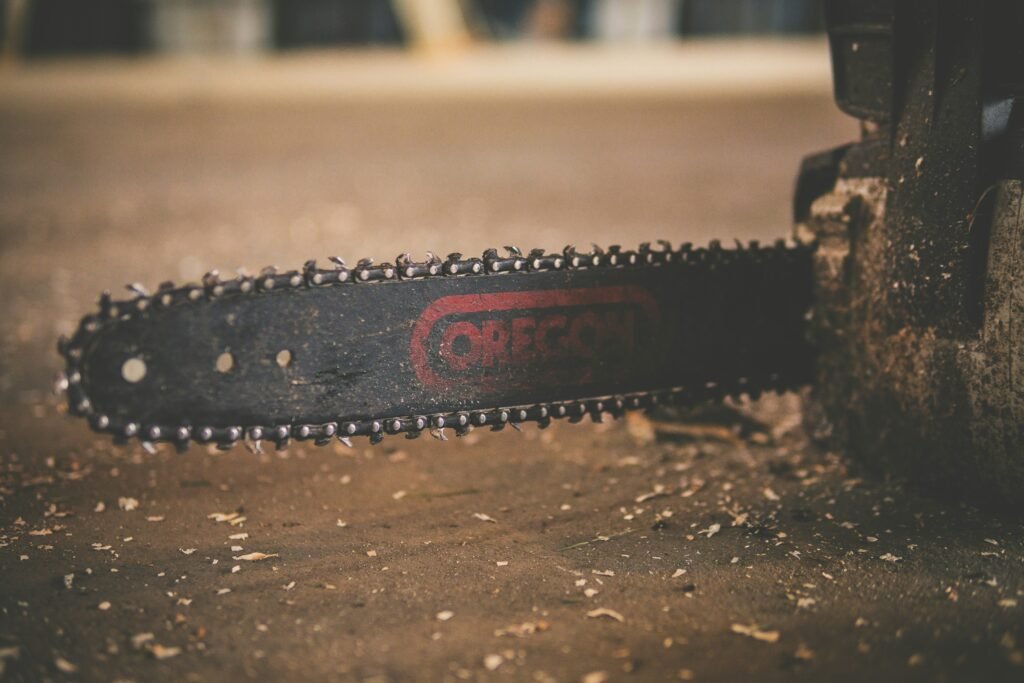
Regular cleaning of chainsaw components is essential for maintaining optimal performance and preventing starting issues. Proper storage techniques protect the equipment from damage, while scheduled professional servicing keeps it in top condition. Using high-quality fuel and oil mixtures ensures reliable operation, and regularly inspecting and replacing the chain as needed further enhances safety and efficiency. Each of these practices will be covered in detail to provide practical insights for chainsaw users.
Regular Cleaning of Chainsaw Components
Regular cleaning of chainsaw components is vital for maintaining effective performance and preventing starting issues. Dirt, sawdust, and debris tend to accumulate in various parts, obstructing airflow and fuel delivery. By dedicating time to clean these components, users can ensure their chainsaw operates efficiently and consistently starts without hassle.
Users should focus on key areas such as the air filter, spark plug, and carburettor. Cleaning the air filter helps to maintain proper airflow, while a clean spark plug promotes effective ignition. Additionally, ensuring the carburettor is free from debris supports optimal fuel flow, reducing the chances of starting difficulties caused by clogged systems.
Establishing a regular cleaning schedule can significantly enhance the longevity and functionality of the chainsaw. Users are encouraged to incorporate cleaning routines after each use or at least once a month, depending on frequency of use. This proactive approach will not only make starting the chainsaw easier but also enhance its overall performance and reliability:
- Prioritise cleaning the air filter regularly.
- Inspect and clean the spark plug after every few uses.
- Keep the carburettor free from dirt to improve fuel delivery.
Proper Storage Techniques
Proper storage techniques are essential for ensuring chainsaws remain in good working condition and are ready for use when needed. Users should store the chainsaw in a cool, dry place, away from direct sunlight and moisture, as these elements can cause rust and damage to critical components. It is also advisable to keep the chainsaw out of reach of children and pets to prevent accidents.
Before storing the chainsaw, it’s important to prepare it by removing any fuel or oil that could deteriorate over time. Fuel left in the tank may go stale, making it harder to start the engine. A good practice is to run the chainsaw until it runs out of fuel or drain the fuel tank and add a fuel stabiliser if prolonged storage is expected.
Maintaining a clean chainsaw prior to storage can greatly enhance its longevity. Cleaning the external parts to remove dirt and debris ensures that no grime clogs up the mechanisms when not in use. Users should also consider lubricating the chain and bar before storing to prevent rust and ensure smooth operation when the chainsaw is taken out for the next job.
Scheduled Professional Servicing
Scheduled professional servicing plays a crucial role in maintaining chainsaw performance and preventing starting issues. Regular service consultations allow experienced technicians to identify potential problems before they escalate, ensuring the chainsaw operates smoothly throughout its lifespan. This proactive approach saves users both time and money by mitigating the risk of costly repairs that can stem from neglect.
During scheduled servicing, technicians will conduct comprehensive inspections of all critical components, including the carburettor, ignition system, and fuel lines. By ensuring these parts function optimally, the likelihood of starting difficulties is significantly reduced. Such detailed attention can help chainsaw users enjoy a reliable and efficient tool, ready for use whenever needed.
Incorporating scheduled professional servicing into a maintenance routine empowers chainsaw owners to utilise their equipment efficiently. Not only does this approach enhance the chainsaw’s overall reliability, but it also provides peace of mind, knowing that an expert has meticulously checked the tool. Engaging a professional for servicing should be viewed as an investment in the long-term functionality and performance of the chainsaw.
Using High-Quality Fuel and Oil Mixtures
Using high-quality fuel and oil mixtures is essential for the reliable operation of a chainsaw. The correct proportions of petrol and two-stroke oil not only ensure optimal combustion but also protect engine components from wear. Chainsaw owners should choose fuel that contains no more than 10% ethanol, as higher levels can lead to serious engine problems.
Regularly replacing stale or old fuel enhances starting reliability significantly. Fuel that has been stored for too long tends to lose its combustibility, causing starting difficulties. Chainsaw users should drain any old fuel and refill with a fresh mixture—doing this frequently can prevent frustrating issues that stem from poor fuel quality.
It is also advisable to use manufacturer-recommended oil types to maximise engine performance. Understanding specific requirements for gas-to-oil ratios will help ensure the chainsaw functions efficiently over time. By maintaining high standards for fuel and oil usage, users can enhance the longevity of their equipment while minimising the risk of starting complications:
- Choose high-quality fuel with low ethanol content.
- Regularly replace stale or old fuel in the chainsaw.
- Use manufacturer-recommended oil types for optimal performance.
Inspecting and Replacing the Chain as Needed
Inspecting and replacing the chainsaw chain is an essential practice for maintaining optimal performance and preventing starting issues. A worn or damaged chain can create additional strain on the engine, leading to potential starting problems. Regularly examining the chain for signs of wear, such as dullness or visible damage, ensures the chainsaw operates efficiently during use.
When the chain becomes dull, it can cause the engine to overwork, which may lead to hard starting or operational difficulties. Chainsaw users should consider replacing the chain if it has lost its sharpness or if any links appear bent or broken. By actively checking the chain after each use, owners can address issues before they escalate, making the tool more reliable for future tasks.
Moreover, maintaining a properly tensioned and aligned chain is crucial for smooth operation. An improperly adjusted chain can wear down faster and may even slip during use, causing performance issues. Ensuring that the chain is correctly tensioned not only augments its lifespan but also supports effective starting and overall machinery function, providing users with a seamless gardening experience.
Safety Measures During Troubleshooting and Repairs
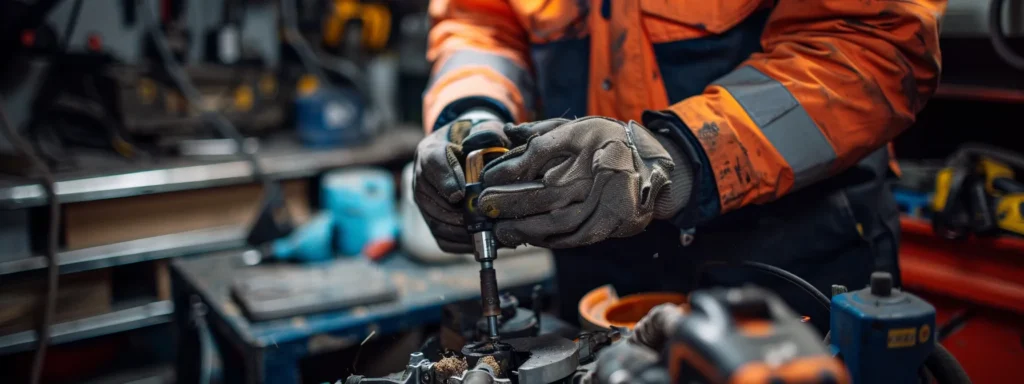
Wearing appropriate protective equipment is crucial when troubleshooting chainsaw starting issues. Disconnecting the spark plug before maintenance prevents accidental ignition, while handling fuel safely is essential to avoid accidents. Adhering to the manufacturer’s instructions ensures proper repairs, and maintaining a clear, organised work area enhances safety. Each of these practices will be elaborated on to provide insightful guidance for users.
Wearing Appropriate Protective Equipment
Wearing appropriate protective equipment is essential when troubleshooting chainsaw starting issues. This ensures the safety of individuals during maintenance tasks, particularly when working with sharp components or handling fuel. Essential protective gear includes safety goggles to shield the eyes from flying debris and gloves to protect the hands from sharp edges and fuel spills.
Furthermore, using ear protection can help reduce the noise impact when starting or running the chainsaw, especially in enclosed spaces. A sturdy pair of work boots with slip-resistant soles provides vital foot protection against heavy equipment and potential slips. By prioritising this protective equipment, users can work with greater confidence while diagnosing and resolving starting problems with their chainsaws.
Incorporating the right safety measures during maintenance not only prevents accidents but also enhances overall operational efficiency. When individuals feel secure, they can focus more effectively on identifying and addressing the root causes of starting issues. This proactive approach fosters a safer environment while ensuring the chainsaw remains in optimal working condition for future use.
Disconnecting the Spark Plug Before Maintenance
Disconnecting the spark plug before maintenance is a critical safety measure when troubleshooting chainsaw starting issues. This simple action prevents accidental ignition while performing repairs or inspections, safeguarding the user from potential injury. Neglecting this step may lead to unforeseen accidents, particularly if the chainsaw inadvertently starts during maintenance.
To disconnect the spark plug, users should first ensure the chainsaw is turned off and cool. By using a spark plug socket wrench, they can safely remove the spark plug wire, creating a secure work environment. This practice not only reduces the likelihood of accidents but also allows users to focus on diagnosing and resolving starting problems more effectively.
Incorporating the habit of disconnecting the spark plug each time maintenance is performed enhances overall safety. An organised approach to maintenance, including this precautionary step, helps users to work with confidence. Establishing a routine that prioritises safety can lead to more successful troubleshooting and a reliable chainsaw for gardening tasks:
| Action | Importance | Outcome |
|---|---|---|
| Disconnect spark plug | Prevents accidental ignition | Improved safety during maintenance |
| Ensure chainsaw is cool | Avoids burns and injuries | Safe working environment |
| Use appropriate tools | Facilitates easy disconnection | Efficiency in troubleshooting |
Handling Fuel Safely to Prevent Accidents
Handling fuel safely is essential for preventing accidents during chainsaw maintenance and troubleshooting. Users should always work in a well-ventilated area, ensuring that vapours dissipate quickly, which reduces the risk of ignition. Moreover, utilising proper containers for fuel storage and transport minimises the chance of spills that can lead to accidents.
When refuelling a chainsaw, it is vital to avoid overfilling the tank, as fuel can spill and create hazardous conditions. Users should take care to wipe away any spills immediately with an absorbent cloth, and allow the saw to cool down before adding fuel, which further reduces the risk of fire. Being mindful of these procedures supports a safe working environment when addressing starting issues with the chainsaw.
In addition, wearing the appropriate protective gear while handling fuel is crucial. Users should don safety goggles and gloves to protect against potential splashes and spills. This personal protection safeguards the user and encourages best practices, fostering an overall culture of safety while ensuring the chainsaw remains in top operating condition.
Following Manufacturer’s Instructions Carefully
Following the manufacturer’s instructions carefully is essential when troubleshooting chainsaw starting issues. Each chainsaw model has specific guidelines that outline the proper maintenance and repair procedures. By adhering to these instructions, users can prevent potential complications and ensure the chainsaw operates safely and effectively.
Manufacturers often provide detailed guidance on adjusting components such as the carburettor and spark plug settings. Understanding these guidelines helps users avoid common pitfalls that might arise from incorrect adjustments. Moreover, referring to the user manual can assist in identifying compatible parts, ensuring that any replacements made will enhance the chainsaw’s performance and reliability.
Additionally, following manufacturer recommendations fosters a proactive approach to chainsaw maintenance. Routine checks, as suggested in the manual, can help users catch minor issues before they escalate into more significant problems. By investing time in understanding and implementing these practices, chainsaw users can enjoy a smoother and more reliable cutting experience, ultimately saving time and reducing frustration.
Keeping Work Area Clear and Organized
Keeping the work area clear and organized is essential for ensuring safety during troubleshooting and repairs on chainsaws. A cluttered workspace can lead to accidents, such as tripping or misplacing tools, which may cause delays in identifying and resolving chainsaw starting issues. By maintaining a tidy environment, users can focus better on the task at hand, ultimately improving efficiency and effectiveness.
Organizing tools and materials not only enhances safety but also promotes productivity. Users should designate specific areas for storing equipment and ensure that any hazardous materials, such as fuel and oils, are stored securely and away from ignition sources. Implementing a routine clean-up after each session will further reinforce good habits, allowing successful repairs and maintenance on chainsaws without unnecessary distractions.
Moreover, an orderly workspace allows users to track their progress and quickly retrieve necessary tools when troubleshooting chainsaw starting problems. This approach fosters confidence and provides a clear overview of tasks completed and those that remain. By incorporating these simple practices into chainsaw maintenance routines, users can significantly reduce the risk of accidents and enhance overall operational success:
- Maintain a tidy and clutter-free work environment.
- Designate specific storage areas for tools and materials.
- Implement a clean-up routine after each use to avoid distractions.
When to Seek Professional Assistance

Recognising signs of major mechanical issues is crucial when a chainsaw fails to start, as these problems may require professional intervention. Understanding warranty coverage can provide peace of mind during repairs. Finding a qualified service technician ensures proper assessment, while weighing repair costs against replacement options helps users make informed decisions. Additionally, exploring upgraded chainsaw models may present better alternatives for effective solutions.
Recognizing Signs of Major Mechanical Issues
Recognising signs of major mechanical issues in a chainsaw is essential for effective troubleshooting. If a chainsaw consistently fails to start after performing standard maintenance checks, it may indicate deeper problems. Issues such as low compression, excessive exhaust smoke, or unusual noise during operation often signify that professional assistance is needed.
Another critical indicator of potential mechanical failure is the performance of the chainsaw. For example, if the engine runs erratically, stalls frequently, or shows signs of flooding even after proper fuel management, these symptoms warrant immediate attention. Users should not ignore sudden drops in power or persistent leaking from the fuel lines, as these can lead to more severe complications.
Ultimately, frequent checks and prompt responses to these warning signs can prevent greater damage down the line. When facing persistent starting troubles, users should weigh the potential risks versus benefits of DIY repairs against seeking help from a qualified technician to ensure their chainsaw operates reliably. Engaging a professional will provide peace of mind and restore the chainsaw’s efficiency:
- Persistent starting difficulties despite regular maintenance.
- Erratic performance, including stalling or power loss.
- Signs of fuel leaks or excessive exhaust smoke.
Understanding Warranty Coverage
Understanding warranty coverage is critical for chainsaw users facing persistent starting issues. Most manufacturers offer a warranty that covers defects in materials and workmanship for a specific period after purchase. This coverage can save users money on repairs, providing peace of mind when troubleshooting chainsaw problems.
If a chainsaw fails to start after undergoing the necessary maintenance, users should assess whether the remaining warranty period applies. Reviewing warranty documents will clarify what components are included and what actions may void the coverage. This knowledge empowers users to make informed decisions regarding repairs, whether opting for professional service or handling issues independently.
Furthermore, working with a certified technician ensures that any repairs are carried out correctly, maintaining warranty validity. Users can also reach out to their manufacturer for guidance on finding authorised service centres and understanding what information or documentation is required during repairs. By leveraging warranty coverage effectively, chainsaw owners can address starting issues systematically and avoid unnecessary costs.
Finding a Qualified Service Technician
Finding a qualified service technician is essential for chainsaw owners experiencing persistent starting issues. A trained professional can accurately assess the problem and recommend effective solutions, ensuring the chainsaw operates reliably. Consumers should look for technicians with relevant certifications and experience in servicing chainsaws specifically, as this expertise can significantly enhance the quality of repairs.
When searching for a qualified technician, it is advisable to consult local reviews and seek recommendations from fellow gardening enthusiasts or hardware stores. Many areas offer mobile mechanics who can come to the user’s location, making repairs more convenient. Also, checking the technician’s background for customer satisfaction can provide peace of mind before committing to their services.
By prioritising the search for a skilled technician, chainsaw owners can address major mechanical issues without risking further damage to their equipment. Technicians familiar with specific brands are more likely to use appropriate parts and maintain warranty coverage. Ultimately, finding a professional can save time and enhance the lifespan and performance of the chainsaw:
| Step | Action | Purpose |
|---|---|---|
| Research | Look for qualified technicians | Ensure correct expertise |
| Seek Recommendations | Ask fellow gardeners | Gain trusted insights |
| Read Reviews | Check customer feedback | Assess service quality |
Weighing Repair Costs vs. Replacement
When deciding whether to repair a chainsaw or invest in a new one, users should evaluate the overall costs involved. Repair costs can fluctuate based on the specific issues and the parts that need replacement. If the repair expenses are significantly less than purchasing a new chainsaw, it is often more economical to proceed with repairs, particularly for minor issues. For instance, replacing a spark plug or cleaning a fuel filter typically costs less than a new chainsaw.
However, if the chainsaw requires extensive repairs, such as carburettor or ignition system replacements, it may make more sense to purchase a new model. Continuous starting difficulties that persist after repairs can signal that the chainsaw is nearing the end of its lifespan. In such cases, investing in a reliable new chainsaw can lead to better performance and save users from ongoing repair frustrations.
Ultimately, users should also consider their individual needs and the frequency of use when weighing repair versus replacement. For occasional users, repairing a chainsaw may suffice, while professionals who rely on dependable equipment may benefit more from a new purchase. Evaluating the total costs alongside personal usage can guide users in making informed decisions about their chainsaw’s future:
- Assess the cost of repairs vs the cost of a new chainsaw.
- Consider the extent of repairs needed and their impact on performance.
- Evaluate individual usage needs when making the decision.
Exploring Upgraded Chainsaw Models
Exploring upgraded chainsaw models can offer significant benefits for users experiencing persistent starting issues. Newer models often incorporate advanced technology and design enhancements that improve reliability and ease of use. Many updated chainsaws feature improved ignition systems, fuel efficiency, and better safety mechanisms, addressing the common pain points faced by traditional chainsaw users.
Investing in an upgraded chainsaw can also provide peace of mind for those who depend on their equipment for landscaping, tree trimming, or firewood preparation. Many modern chainsaws are designed to work seamlessly with the latest fuel mixtures and have features that minimise common starting problems. For instance, enhanced air filters and automatic starter systems can significantly reduce the frequency of troubleshooting, making it easier for users to get to work.
Ultimately, choosing an upgraded chainsaw model not only resolves past starting difficulties but also enhances overall performance and efficiency. Users should consider their specific needs and frequency of use when selecting a new chainsaw. By analysing the features of upgraded models, individuals can find a suitable option that ensures reliable operation, reducing the frustration associated with starting issues and increasing productivity in their gardening tasks.
Conclusion
Addressing chainsaw starting issues is vital for ensuring reliability and efficiency in gardening tasks. Implementing effective solutions, such as regular maintenance, inspecting key components, and using quality fuel, significantly enhances performance and reduces frustration. Understanding the signs of mechanical problems can prevent costly repairs and extend the lifespan of the equipment. By prioritising these actionable insights, users can enjoy a more seamless operation and maximise the value of their chainsaw investment.
Chainsaw Buying Guide Articles
- Essential Chainsaw Buying Guide for New Homeowners
- How to Select the Perfect Pole Chainsaw for Trimming High Branches
- Unlocking the Benefits of Corded Electric Chainsaws
- Choosing the Right Chainsaw: Professional vs Consumer Models Comparison – Buying a Chainsaw Q&As
- Chainsaw Brands Comparison: Discover Your Ideal Match
Chainsaw Maintenance Articles
- Solving Chainsaw Bar Oiling Issues: A Step-by-Step Guide
- Essential Chainsaw Maintenance Tips for Enhanced Durability and Performance
- How to Select the Best Chainsaw Bar Oil for Your Needs
- Comprehensive Chainsaw Maintenance Guide for Enhanced Safety
- Step-by-Step Guide to Changing Chainsaw Spark Plugs
- Choosing the Perfect Replacement Chains for Your Chainsaw
- Step-by-Step Guide on Replacing Chainsaw Spark Plugs
- How to Select the Best Chainsaw Bar Oil for Your Needs
- Selecting the Ideal Battery for Your Electric Chainsaw: A Comprehensive Guide
- Step-by-Step Guide to Cleaning Your Chainsaw Air Filter Effectively
Chainsaw Operation Techniques Articles
- Step-by-Step Guide to Changing Chainsaw Spark Plugs
- Choosing the Perfect Replacement Chains for Your Chainsaw
- Comprehensive Guide to Proper Chainsaw Handling and Safety
- How to Select the Perfect Chainsaw Bar and Guide for Your Needs
- Effective Solutions for Chainsaw Starting Issues
- Top Tips for Boosting Fuel Efficiency in Petrol Chainsaws
Chainsaw Repair Advice Articles
- Comprehensive Guide to Fixing Chainsaw Starting Issues
- Step-by-Step Guide on Replacing Chainsaw Spark Plugs
- How to Select the Best Chainsaw Bar Oil for Your Needs
- Step-by-Step Guide to Cleaning Your Chainsaw Air Filter Effectively
- How to Replace a Chainsaw Chain: Your Comprehensive Guide
- Effective Solutions for Chainsaw Starting Issues
Chainsaw Safety Tips Articles
- Essential Chainsaw Safety Features: A Comprehensive Guide for Buyers
- Stay Safe with Chainsaw Safety Gear Essentials: Your Guide
- Chainsaw Safety: Strategies to Avoid Tree Cutting Accidents
- Essential Chainsaw Techniques for Safely Managing Tree Limbs and Branches
- Chainsaw Safety and Handling: Mastering Proper Techniques
- Comprehensive Guide to Proper Chainsaw Handling and Safety
- Essential Winter Chainsaw Storage Tips to Protect Your Equipment
- Mastering Chainsaw Safety: A Guide to Preventing Kickback
- Comprehensive Guide to Essential Chainsaw Safety Gear
- Expert Tips on Chainsaw Kickback Prevention: A Safety Guide
Chainsaw Storage Articles
- The Essential Guide to Storing Your Chainsaw Safely
- How to Select the Best Chainsaw Storage Case or Bag for Your Needs
Electric vs Petrol / Gas Chainsaws Articles
- Durability Comparison: Gas Versus Electric Chainsaws
- How to Decide on Electric Versus Gas Chainsaws: A Detailed Guide
- Reducing Your Carbon Footprint With Electric Chainsaws
- Why Opting for a Battery Powered Chainsaw Is a Smart Choice
- Selecting the Ideal Battery for Your Electric Chainsaw: A Comprehensive Guide
- Durability Comparison: Gas Versus Electric Chainsaws
- Electric vs Gas/Petrol Chainsaws: A Detailed Comparison of Power Output
- Petrol vs Electric Chainsaws: Explore the Pros and Cons
Tree Cutting Techniques Articles
- Mastering Chainsaw Cutting Angles for Precision Tree Felling
- How to Select the Perfect Chainsaw for Your Tree Cutting Needs
- Essential Safety Tips for Cutting Large Trees Using a Chainsaw
- Essential Chainsaw Techniques for Safely Managing Tree Limbs and Branches
- Chainsaw Safety: Strategies to Avoid Tree Cutting Accidents
- Chainsaw Safety and Techniques for Efficient Tree Felling
Types of Chainsaws Articles
- Why Opting for a Battery Powered Chainsaw Is a Smart Choice
- Reducing Your Carbon Footprint With Electric Chainsaws
- Uncovering the Evolution: History of Chainsaws Explained
- Unlocking the Benefits of Corded Electric Chainsaws
- Comparing Electric and Petrol Chainsaws: Key Factors to Consider
- Affordable Chainsaws for Beginners: A Buyer’s Guide
Chainsaw Accessories Articles
Articles Coming Soon


